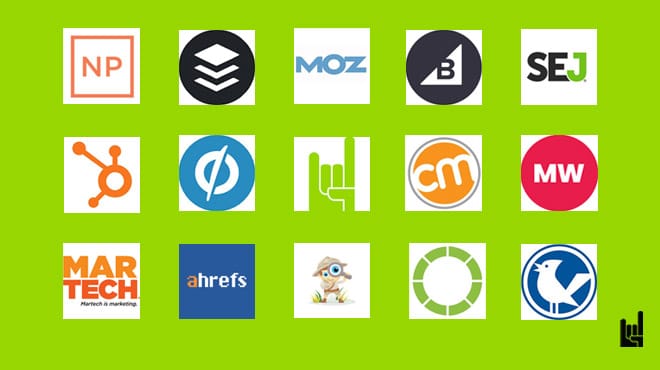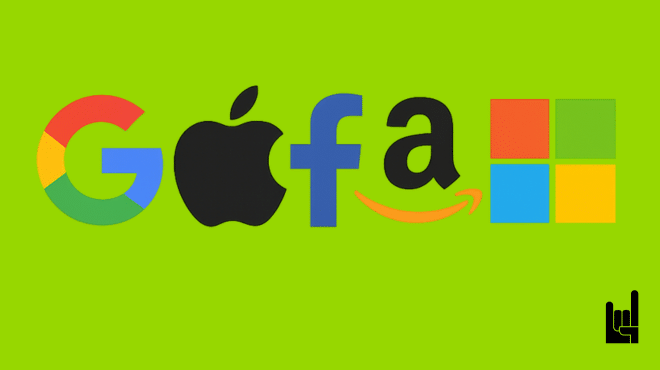Intro
Let’s address the elephant in the room: Is actually AI transforming our World? And if so, in which direction? Well, the answer is: YES, it does. But in a different way from the way you may have thought of.
AI is yet another thing that is forcing us out of our comfort zone. I have 3 recent examples that had forcing us into behaviors we didn’t expect:
The financial recession of the last decade forced us to seize the day rather than make long-term plans
Covid forced us to go digital, work from home, and make most meetings remotely
Bank’s bailouts, forced us to diversify our investments and consume as much as possible because nothing is “safe” forever.
Similarly to the above, AI is forcing us, humans, to upskill and adapt to new technologies and ways of working. As AI is becoming more prevalent in various industries, it is changing the nature of work and the skills that are required to be successful in those industries. And while replacing existing jobs it opens other jobs in higher level, job positions that didn’t exist a few decades ago. AI is driving a shift in the skills that are required for success in the workforce.
First things first, AI is NOT equal to ML
Machine Learning (ML) is older (existed already for decades) and is basically a subset of Artificial Intelligence (AI). AI is a broader field that includes a range of technologies that enable machines to perform tasks that would normally require human intelligence, such as image recognition, speech recognition, and decision-making.
ML, on the other hand, is a specific technique within the field of AI that involves training algorithms to learn from data and improve their performance over time. ML algorithms can be supervised, unsupervised, or semi-supervised, and can be used for a wide range of applications such as image and speech recognition, natural language processing, and predictive analytics.
So, is AI an evolution of ML?
Again no, AI (Artificial Intelligence) and ML (Machine Learning) are related but distinct fields.. So, while ML is an important component of many AI systems, AI is a much broader field that encompasses many other techniques and approaches beyond ML. Therefore, it would not be accurate to say that AI is an evolution of ML.
AI in Marketing
As a marketer and founder for a growth/ AI marketing agency, I’m sure you’ve expected that I would start with marketing…
So, here you are:
Chatbots: AI-powered chatbots can be used to provide customer service and support around the clock, without the need for human intervention. Chatbots can also help businesses to collect customer feedback and generate leads.
Recommendation engines: AI-powered recommendation engines can be used to analyze customer data and provide personalized product recommendations based on their preferences and purchase history. This can help businesses to increase customer loyalty and drive sales.
Content creation: AI-powered content creation tools can be used to create blog posts, social media updates, and even product descriptions. This can help businesses to create high-quality content at scale and improve their SEO rankings. Check this article about the 20 prompts for digital marketing to understand the power that it unleashes.
Ad targeting: AI-powered ad targeting tools can be used to analyze user behavior and target ads more effectively, increasing the likelihood of conversion.
Content Repurposing: AI can get a video and create a summary out of it or a blog post by “transcreating” the content on the video
Content curation: AI can analyze large amounts of data to identify relevant and engaging content to share with an audience. This can include recommendations for articles, videos, or products based on a user’s preferences and browsing history.
AI in data analytics
Data Analysis: Automate of the process of analyzing and interpreting large volumes of data. AI-powered data analytics tools can help businesses to identify patterns, trends, and insights in their data that would be difficult or impossible to identify manually.
Predictive analytics: AI-powered predictive analytics tools can be used to analyze customer data and predict future behavior, such as purchase intent or churn probability. This can help marketers to target their campaigns more effectively and personalize their messages.
AI in healthcare
Develop personalized treatment plans: By analyzing large amounts of patient data, including medical history, genetics, lifestyle factors, and treatment outcomes. This data can be used to develop predictive models that can identify the most effective treatment options for individual patients based on their unique characteristics.
Improve diagnostic accuracy: By analyzing large amounts of medical data, including medical images, patient history, and laboratory results, to identify patterns and make predictions
Develop new drugs and therapies: By analyzing vast amounts of biological data and identifying patterns that can inform drug discovery and development.
AI In transportation
AI is being used to develop autonomous vehicles,
Optimization of logistics and supply chain operations, by analyzing large amounts of data and identifying patterns that can inform more efficient and effective decision-making. It can improve functions like Demand forecasting, route optimization, warehouse management systems, predictive maintenance, or digital supplier management.
Improvement of the traffic flow, by analyzing traffic patterns and optimizing traffic signals and other traffic management systems in real-time. Imagine a system (call me AI) that can optimize traffic signal timing in real time based on current traffic conditions, such as traffic volume and congestion. This can help reduce delays and improve traffic flow.
AI in financial services
Artificial intelligence in fintech, banking, payment processing, and other financial branches is becoming more necessary and widespread each day
Fraud detection, by analyzing large amounts of data and identifying patterns that indicate fraudulent activity to detect anomalies and unusual patterns of activity. Also AI can use behavioral biometrics such as keystroke dynamics and mouse movements, to identify patterns of behavior that are unique to individuals and detect fraudulent activity or can perform a network analysisto identify relationships and connections between individuals and entities, which can help identify fraudulent activity and prevent money laundering.
Risk management by analyzing historical market data and identify potential risks and opportunities in the market, allowing investors to adjust their portfolio holdings accordingly. What’s more, it’s essential to mitigate AI security risks, as vulnerabilities in AI systems could be exploited, leading to severe consequences such as data breaches or compromised fraud detection processes.
Portfolio optimization, by analyzing large amounts of data and identifying patterns that can inform more efficient and effective investment decision-making. AI is able to provide you the best possible asset allocation, predictive modeling, algorithmic trading and informative sentiment analysis
AI in education
AI can help in education in a variety of ways, from personalized learning to improving student engagement and performance. Here are some ways in which you can use AI in the classroom, and other educational environments, to enhance the experience:
Personalized Learning: AI can be used to analyze student data and create personalized learning paths that are tailored to each student’s unique needs and learning style. This can help students to learn at their own pace and focus on the areas where they need the most help.
Intelligent Tutoring: AI can be used to create intelligent tutoring systems that can provide feedback and guidance to students in real time. These systems can adapt to each student’s progress and provide personalized support to help them overcome learning challenges.
Adaptive Assessments: AI can be used to create adaptive assessments that adjust the difficulty level of questions based on the student’s performance. This can provide a more accurate assessment of each student’s knowledge and help teachers to identify areas where students need more support.
AI in manufacturing
AI is being used to improve among others:
Production efficiency, by optimizing processes, reducing downtime, improving quality control, and streamlining the supply chain.
Reduction of waste by optimizing processes and identifying inefficiencies. Waste will be reduced by optimizing its root causes such as Predictive maintenance, Supply chain optimization, Energy management, and Quality control
Enhance quality control by analyzing product quality data and identifying defects before they become widespread,
So, is AI a b2b game?
No, AI is being used in a wide range of applications in everyday life. Here are some examples:
Smart home devices: AI-powered devices such as smart speakers, thermostats, and security systems can be used to automate tasks and improve energy efficiency.
Voice assistants: AI-powered voice assistants such as Siri, Alexa, and Google Assistant can be used to perform tasks such as making phone calls, sending messages, and setting reminders.
Navigation apps: AI-powered navigation apps such as Google Maps and Waze, often regarded as the best free route planners, can be used to provide real-time traffic updates and optimize your routes based on traffic conditions.
Personalized recommendations: AI-powered recommendation engines such as Netflix and Spotify can be used to provide personalized recommendations based on users’ viewing or listening history.
Virtual assistants: AI-powered virtual assistants such as chatbots and voice assistants can be used to provide customer service and support in industries such as healthcare, finance, and transportation.
Social media: AI is being used in social media platforms such as Facebook and Twitter to provide personalized content recommendations, detect and remove fake accounts, and prevent cyberbullying.
Personalized healthcare: AI-powered healthcare applications can be used to analyze patient data and provide personalized treatment recommendations based on their medical history and genetic information.
Virtual companion: For daily interactions with us all while being a metahuman on the other end. Imagine cases like moving to a new place, suffering from certain health conditions that can make it difficult for people to engage in social activities, unemployment, loss of a loved one, walking your pet at night, dysfunctional family dynamics, relationship problems or just simply talking to someone when noone is available. By the way, I’m so impressed by this virtual companion
New forms of training: such as giving us the ability to learn new things easier than ever (in interactive-podcast style). AI provides also a platform for adaptive learning which refers to the ability to analyze the learner’s performance and provide customized learning paths that adapt to their level of knowledge and progress.
Smarter searching: Up to now we were using Alexa or Siri, to give us the answers to our questions, but in fact, they were always googling for the answer. Now with AI they may combine know-how from the online world and process it into an answer even if that answer exists nowhere online as such.
Complimentary technologies
AI cannot go alone, If you are wondering which technologies surround AI backbones to deliver amazing User Experience, here they are:
NLP technologies: They’ve been used to enable computers to understand and process human language, making it possible for consumers to interact with AI-powered chatbots and virtual assistants.
STT (Speech-to-Text) technology: It’s been used in combination with AI to deliver one-key solutions to consumers. STT technology is used to convert spoken language into text, which can then be processed and analyzed by AI algorithms. Imagine: Voice assistants to understand and respond to user commands, Transcription of audio, video recordings, or live audio streaming making it possible to create transcripts for meetings, interviews, and webinars, but also STT in assisting accessibility, to enable people with hearing impairments to access audio content by providing captions and subtitles or even language translation to enable real-time translation of spoken language
3D modeling: AI can be used to create 3D models of human figures, which can then be animated using computer graphics techniques. This involves using computer vision algorithms to analyze images and videos of real people and create 3D models of their bodies and faces.
Generative adversarial networks (GANs): GANs are a type of machine learning algorithm that can be used to generate realistic-looking images and videos. By training a GAN on a dataset of real human faces and movements, it can learn to generate new animated human figures that are similar in appearance and movement to real humans.
Outro
In conclusion, it’s clear that artificial intelligence is already making a significant impact on our world, from improving healthcare outcomes to transforming the way we shop and communicate. While there are certainly challenges and ethical considerations to be addressed as AI technology continues to evolve, it’s also an exciting time to be at the forefront of these changes. By embracing AI and the potential it holds, we can continue to create a better, more efficient, and more connected world for all of us. So let’s paws for thought and imagine the possibilities that await as we continue to explore the transformative power of AI. We just scratched the surface after all

Theodore has 20 years of experience running successful and profitable software products. In his free time, he coaches and consults startups. His career includes managerial posts for companies in the UK and abroad, and he has significant skills in intrapreneurship and entrepreneurship.



